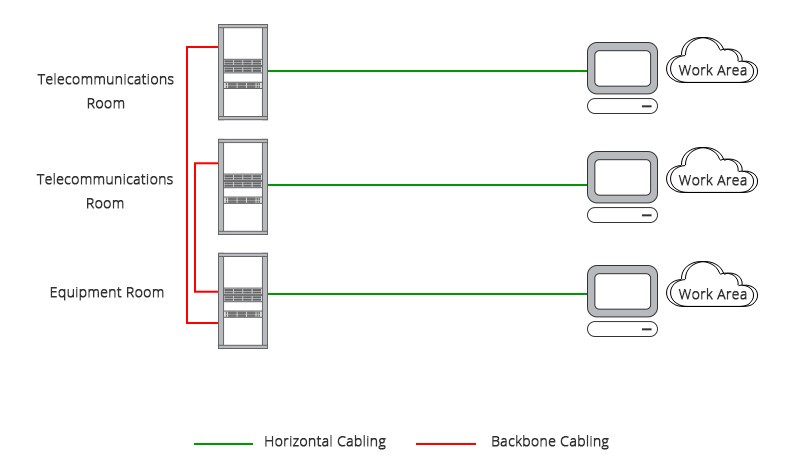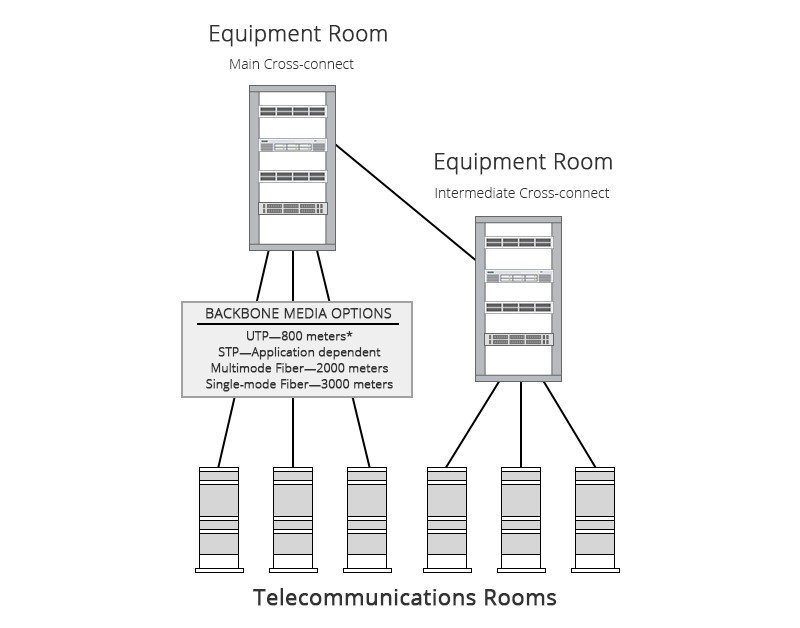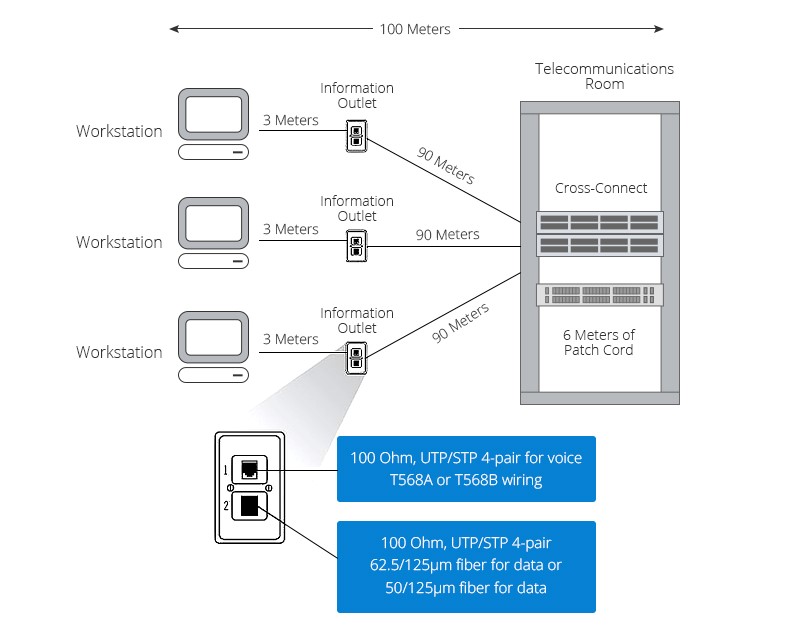Cabling needs for effective IT networks require the proper wiring infrastructure managed by trained, experienced installation professionals. As a leading cabling infrastructure design and installation provider, GBS is sharing this overview of the cabling required for effective networking.
Backbone cabling and horizontal cabling are two main cabling methods used in today’s structured cabling infrastructures. Since backbone cabling and horizontal cabling are different, the cables themselves are unique from each other. The following information will explain the differences between backbone cabling vs horizontal cabling.
Structured Cabling System Basics
To understand backbone cabling and horizontal cabling, let’s understand the subsystems of structured cabling.

Backbone Cabling: A system of cabling that connects the equipment rooms and telecommunications rooms.
Horizontal Cabling: The system of cabling that connects telecommunications rooms to individual outlets or work areas on the floor.
Backbone Cabling
The backbone cabling or vertical cabling provides interconnection between telecommunication rooms, equipment rooms and entrance facilities. Backbones typically connect floors to one another. When setting up backbone cabling, several types of media can be used: unshielded twisted-pair (UTP) cable, shielded twisted-pair (STP) cable, fiber optic cable, or coaxial cable. Equipment should be connected by cables of no more than 30 meters (98 feet).

Cables for Backbone Cabling
With the emerge of Gigabit Ethernet and 10 Gigabit Ethernet, fiber optic cable is the most appropriate choice for backbone cabling since they provide much higher bandwidth than traditional Cat5, Cat6 or even Cat7 twisted pair copper cables. Another advantage of fiber is that fibers can run much longer distance than copper cable, which makes them especially attractive for backbone cabling.
Horizontal Cabling
The horizontal cabling system extends from the work area’s telecommunications information outlet to the telecommunications room (TR) or telecommunications enclosure (TE). As shown in the figure below, horizontal cabling is usually installed in a star topology that connects each work area to the telecommunications room. It includes the telecommunications outlet, an optional consolidation point, horizontal cable, mechanical terminations and patch cords (or jumpers) located in the TR or TE.

Cables for Horizontal Cabling
Both Ethernet cable and fiber optic cable can be used for horizontal cabling with strict guidelines in order to comply with EIA (Electronic Industries Alliance)/TIA (Telecommunications Industry Association), and ANSI (American National Standards Institute) wiring standards.
Key Distinction
The main difference between backbone cabling and horizontal cabling is that they cover different telecommunication service areas. Backbone cabling is to connect the entrance facilities, equipment rooms and telecommunication rooms. It also runs between floors. While horizontal cabling connects telecommunication rooms to individual outlets on the floors.
Both backbone and horizontal cabling use same types of cable, the cables used for backbone cabling have very different requirements because backbone infrastructure passes through from floor to floor. Backbone cables must meet particular fire-rating specifications, typically OFNR (Optical Fiber Non-Conductive Riser) rated. Additionally, backbone cables need to have enough strength to support its own weight, cable strength for backbone cables is also different from horizontal cables. And unlike horizontal cables, backbone cables must be secured correctly.
Summary
Backbone cabling and horizontal cabling play an irreplaceable role in a structured cabling environment. Consult a certified cabling technician to ensure proper infrastructure planning and implementation.
Need a certified cabling technician to review your project? Our BICSI-certified technicians will conduct an on-site pre-design/pre-quote walk-through. This ensures project clarity and scope are defined. Our team will then provide a no-cost estimate. Contact GBS Cabling Solutions by calling 859.491.5900 or email aperkins@gbs-inc.com


